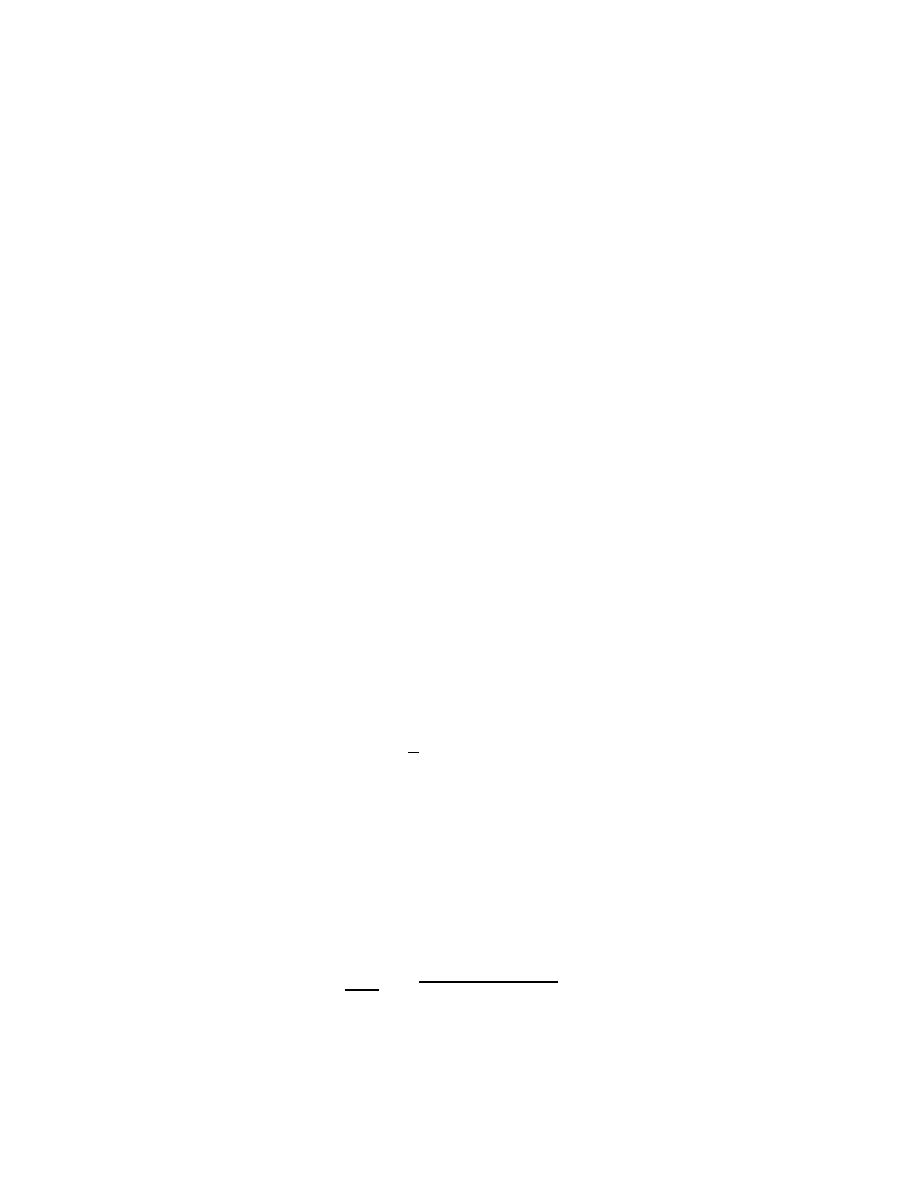
Chapter 1
Setting the stage
1.1
Euclidean spaces and vectors
Let n be a natural number, i.e. n = 1, 2, 3, . . .. The n-dimensional Euclidean
space is the set of odered n-tuples of real numbers. We denote this space by
R
n
. Then
R
n
=
{x = (x
1
, x
2
, . . . , x
n
) : x
1
, x
2
, . . . , x
n
∈ R},
(1.1)
where R denotes the set of real numbers. In fact, R
n
= R
× R × . . . × R
the Cartesean product of R. Each element in x = (x
1
, x
2
, . . . , x
n
) is called
a vector with components x
1
, x
2
, . . . , x
n
. Other notations for vectors can be
bold letters x or underlined letters x; however we will not use these in this
note.
The zero vector of R
n
is simply 0 = (0, 0, . . . , 0).
Let x = (x
1
, x
2
, . . . , x
n
), y = (y
1
, y
2
, . . . , y
n
) be two vectors in R
n
and
c
∈ R. We define the following operations:
Addition: x + y = (x
1
+ y
1
, x
2
+ y
2
, . . . , x
n
+ y
n
),
Scalar product: cx = (cx
1
, cx
2
, . . . , cx
n
),
Dot product: x
· y = x
1
y
1
+ x
2
y
2
+ . . . x
n
y
n
.
The norm (or the length) of x is
|x| =
√
x
· x =
q
x
2
1
+ x
2
2
+ . . . + x
2
n
.
(1.2)
1

2
CHAPTER 1. SETTING THE STAGE
Denote
−x = (−1)x = (−x
1
,
−x
2
, . . . ,
−x
n
).
Some immediate properties:
x+y = y +x, (x+y)+z = x+(y +z), c(x+y) = cx+cy, x+(
−x) = 0, (1.3)
|cx| = |c||x|, | − x| = |x|.
(1.4)
Proposition 1.1
(Cauchy-Schwar’s inequality). For any a, b
∈ R
n
,
|a · b| ≤ |a||b|.
(1.5)
Proof. See text, p.5.
Example 1.2.
For n = 2, a = (a
1
, a
2
), b = (b
1
, b
2
)
∈ R
2
, we have
|a
1
b
1
+ a
2
b
2
| ≤
q
a
2
1
+ a
2
2
q
b
2
1
+ b
2
2
.
(1.6)
For n = 3, a = (a
1
, a
2
, a
3
), b = (b
1
, b
2
, b
3
)
∈ R
3
, we have
|a
1
b
1
+ a
2
b
2
+ a
3
b
3
| ≤
q
a
2
1
+ a
2
2
+ a
2
3
q
b
2
1
+ b
2
2
+ b
2
3
.
(1.7)
Proposition 1.3
(The triangle inequality). For any a, b
∈ R
n
,
|a + b| ≤ |a| + |b|.
(1.8)
Consequently,
|a − b| ≥ | |a| − |b| |.
(1.9)
Corollary 1.4.
For any x, y, z
∈ R
n
,
|x − y| ≤ |x − z| + |z − y|.
(1.10)
|x| ≥ | |y| − |x − y| |.
(1.11)
Relation between the norm of x and that of its components: Let x =
(x
1
, x
2
, . . . , x
n
)
∈ R
n
and M = max
{|x
1
|, |x
2
|, . . . , |x
n
|}, then
M
≤ |x| ≤
√
nM.
(1.12)

1.2. SUBSETS OF EUCLIDEAN SPACE
3
1.2
Subsets of Euclidean space
Let a
∈ R
n
and r > 0. The (open) ball B(r, a) is the set of all points whose
distance to a is less than r,
B(r, a) =
{x ∈ R
n
:
|x − a| < r}.
(1.13)
We can also define the closed ball
B
′
(r, a) =
{x ∈ R
n
:
|x − a| ≤ r}.
(1.14)
Let S be a subset of R
n
. Then the complement of S in R
n
is S
c
, the set
of all points in R
n
that are not in S:
S
c
= R
n
\ S = {x ∈ R
n
: x
6∈ S}.
(1.15)
Example 1.5.
If S = B(r, a), then S
c
=
{x ∈ R
n
:
|x − a| ≥ r}. If
S = B
′
(r, a), then S
c
=
{x ∈ R
n
:
|x − a| > r}.
Definition 1.6.
Let S be a subset of R
n
and x
∈ R
n
.
x is called an interior point of S if there is r > 0 such that B(r, x)
⊂ S.
We denote the set of interior points of S by S
int
:
S
int
=
{x ∈ R
n
:
∃r > 0, B(r, x) ⊂ S}.
(1.16)
x is called a boundary point of S every ball centered at x intersect both
s and S
c
, i.e.,
∀r > 0, B(r, x) ∩ S 6= ∅ and B(r, x) ∩ S
c
6= ∅.
(1.17)
We denote by ∂S the set of all boundary points of S called the boundary of
S:
∂S =
{x ∈ R
n
:
∀r > 0, B(r, x) ∩ S 6= ∅ and B(r, x) ∩ S
c
6= ∅}.
(1.18)
The closure of S is ¯
S = S
∪ ∂S.
S is a neighborhood of x if x is an interior point of S.

4
CHAPTER 1. SETTING THE STAGE
Definition 1.7.
Let S be a subset of R
n
.
S is called open if it contains none of its boundary points: S
∩ ∂S = ∅.
S is called closed if it contains all of its boundary points: ∂S
⊂ S.
Note: R
n
and the empty set
∅ are both open and closed.
Two sets A and B are said to be disjoint if A
∩ B = ∅.
Proposition 1.8.
Let S be a subset of R
n
. Then
a. S and its complement S
c
have the same boundary: ∂S = ∂(S
c
).
b. S
int
, ∂S, (S
c
)
int
are mutually disjoint, i.e., S
int
∩ ∂S, (S
c
)
int
∩ S
int
, ∂S
∩
(S
c
)
int
are empty sets.
c. R
n
= S
int
∪ ∂S ∪ (S
c
)
int
.
Consequently, every point x
∈ R
n
belongs to exactly one of the following
sets S
int
, ∂S, (S
c
)
int
.
We also have S
⊂ S
int
∪ ∂S, hence ¯
S = S
int
∪ ∂S, therefore
Proposition 1.9.
( ¯
S)
c
= (S
c
)
int
.
Proposition 1.10.
Suppose S
⊂ R
n
.
a. S is open
⇐⇒ every point of S is an interior point of S ⇐⇒
S = S
int
.
b. S is closed
⇐⇒ S
c
is open.
Proposition 1.11.
(i) If S
1
and S
2
are both open (or closed), so are S
1
∪ S
2
and S
1
∩ S
2
.
(ii) If
{S
α
}
α∈I
is a fimily of open sets, then
∪
α∈I
S
α
is open.
(iii) If
{S
α
}
α∈I
is a fimily of closed sets, then
∩
α∈I
S
α
is closed.

1.3. LIMITS AND CONTINUITY
5
1.3
Limits and continuity
Let n and k be two natural numbers. Let f be a function form R
n
to R
k
,
a
∈ R
n
and L
∈ R
k
. We say the limit of f (x) as x aproaches a is L if
∀ε > 0, ∃δ > 0, ∀x ∈ R
n
: 0 <
|x − a| < δ =⇒ |f(x) − L| < ε.
(1.19)
Notation:
lim
x→a
f (x) = L.
(1.20)
Proposition 1.12.
The limit lim
x→a
f (x), if exists, is unique.
Some equivalent statements of (1.19):
• If a = (a
1
, a
2
, . . . , a
n
), then we have lim
x→a
f (x) = L if and only if
∀ε > 0, ∃δ > 0, ∀x = (x
1
, x
2
, . . . , x
n
)
∈ R
n
:
0 <
|x−a| < max{|x
1
−a
1
|, |x
2
−a
2
|, . . . , |x
n
−a
n
|} < δ =⇒ |f(x)−L| < ε.
(1.21)
• If f = (f
1
, f
2
, . . . , f
k
) and L = (L
1
, L
2
, . . . , L
k
), where each f
j
is a
function from R
n
to R then
lim
x→a
f (x) = L
⇐⇒ lim
x→a
f
j
(x) = L
j
for all j = 1, 2, . . . , k.
(1.22)
Example 1.13.
See text, p. 14, 15.
Proposition 1.14.
Let f, g : R
n
→ R
m
, a
∈ R
n
and
lim
x→a
f (x) = L,
lim
x→a
g(x) = K.
(1.23)
Then
(i) lim
x→a
(f + g)(x) = L + K.
In the case m = 1, we have
(ii) lim
x→a
(f g)(x) = LK.
(iii) If L
6= 0, then
lim
x→a
g(x)
f (x)
=
K
L
.

6
CHAPTER 1. SETTING THE STAGE
Remark 1.15.
We have
lim
x→a
= L if and only if lim
x→a
|f(x) − L| = 0.
(1.24)
When L = 0, it becomes
lim
x→a
f (x) = 0 if and only if lim
x→a
|f(x)| = 0.
(1.25)
Proposition 1.16
(“squeezing property”). Let f, g, h : R
n
→ R satisfying
g(x)
≤ f(x) ≤ h(x) for all x ∈ R
n
. Suppose a
∈ R
n
and
lim
x→a
g(x) = lim
x→a
h(x) = L
∈ R
m
.
Then lim
x→a
f (x) = L.
Proposition 1.17.
Let f : R
n
→ R, a ∈ R
n
and lim
x→a
f (x) = L.
(i) If f (x)
≤ M for all x ∈ B(r, a) for some r > 0 then L ≤ M.
(ii) If f (x)
≥ m for all x ∈ B(r, a) for some r > 0 then L ≥ m.
Definition 1.18.
Let a
∈ R
n
, we say f is continuous at a if
lim
x→a
f (x) = f (a),
(1.26)
equivalently,
∀ε > 0, ∃δ > 0, ∀x ∈ R
n
:
|x − a| < δ =⇒ |f(x) − L| < ε.
(1.27)
Let U be a subset of R
n
. We say f is continuous on U if f is continuous
at every point a of U.
Proposition 1.19.
Let U
⊂ R
n
and f, g : R
n
→ R
m
be continuous on U.
Then (f + g) and (f
· g) are continuous on U.
In the case m = 1, we have (f g) is continuous on U and (f /g) is contin-
uous on V = U
\ g
−
1
(
{0}) = {x ∈ U : g(x) 6= 0}.
Theorem 1.20.
Let f : R
n
→ R
k
, g : R
k
→ R
m
, and U
⊂ R
n
. If f is
continuous on U and g is continuous on f (U) then g
◦ f is continuous on U.
Theorem 1.21.
Let f : R
n
→ R
m
be continuous and U be a subset of R
m
.
If U is open (resp. closed), then f
−
1
(U) is open (resp. closed).

1.4. SEQUENCES
7
1.4
Sequences
Let A be a non-empty set. A sequence in A is a function f : N
→ A, that is,
for all k
∈ N, x
k
= f (k)
∈ A. Notation {x
k
}, {x
k
}
∞
1
,
{x
k
}
∞
k=1
, . . ..
Definition 1.22.
Let
{x
k
} be a sequence in R
n
and L
∈ R
n
. We say
{x
k
}
coverges to the limit L if
∀ε > 0, ∃K ∈ N, ∀k ∈ N : k > K =⇒ |x
k
− L| < ε.
(1.28)
Notation:
lim
k→∞
x
k
= L.
In this case, we say the sequence is convergent, otherwise the sequence is
divergent.
In the case m = 1 we have the following two definitions
lim
k→∞
x
k
=
∞ ⇐⇒ ∀M > 0, ∃K ∈ N, ∀k ∈ N : k > K =⇒ x
k
> M, (1.29)
lim
k→∞
x
k
=
−∞ ⇐⇒ ∀M > 0, ∃K ∈ N, ∀k ∈ N : k > K =⇒ x
k
<
−M.
(1.30)
If lim
k→∞
x
k
=
∞ or −∞ then {x
k
} is divergent.
Limits of sequences have similar properties to those of limits of functions.
Theorem 1.23.
Suppose S
⊂ R
n
and x
∈ R
n
. Then x belongs to the closure
of S if and only if there is a sequence in S coverging to x.
Corollary 1.24.
Let S be a subset of R
n
. Then S is closed if and only if for
every sequence
{x
k
} in S which converges to a ∈ R
n
, we have a
∈ S.
Theorem 1.25.
Let S
⊂ R
n
, f : S
→ R
m
and a
∈ S. Then the following
are equivalent
a. f is continuous at a.
b. For any sequence
{x
k
} in S that converges to a, the sequence {f(x
k
)
}
converges to f (a).

8
CHAPTER 1. SETTING THE STAGE
Let
{x
k
}
∞
k=1
be a sequence. Let k
j
be a strictly increasing function from
N
to N, that is, k
j
∈ N for all j ∈ N and k
j
> k
l
whenever j > l. Note
that the latter property is equivalent to k
j+1
> k
j
for all j
∈ N. Then the
sequence
{x
k
j
}
∞
j=1
is called a subsequence of
{x
k
}.
Lemma 1.26.
Let k
j
be a strictly increasing function from N to N. Then
k
j
≥ j for all j ∈ N.
Proposition 1.27.
Let
{x
k
}
∞
k=1
be a convergent sequence in R
n
. Then any
subsequence
{x
k
j
}
∞
j=1
of
{x
k
} is convergent and
lim
j→∞
x
k
j
= lim
k→∞
x
k
.

1.5. COMPLETENESS
9
1.5
Completeness
Let S
⊂ R and c ∈ R.
• c is an upper bound of S if ∀x ∈ S, x ≤ c.
• S is said to be bounded (from) above if it has an upper bound.
• c is a lower bound of S if ∀x ∈ S, x ≥ c.
• S is said to be bounded (from) below if it has an lower bound.
• We say S is bounded if it is bounded above and below, equivalently there
are m, M
∈ R such that m ≤ x ≤ M for all x ∈ S, or equivalently,
there is C > 0 such that
|x| ≤ C for all x ∈ S.
• A least upper bound of S, called sup S, is an upper bound of S and is
smallest among the all upper bounds of S.
• A greatest lower bound of S, called inf S, is a lower bound of S and is
largest among the all lower bounds of S.
Note that if sup S (or inf S) exists then it is unique.
Let A
⊂ B ⊂ R. Then
sup A
≤ sup B, inf B ≤ inf A.
(1.31)
Let A
⊂ R. Let B = {−x : x ∈ A}. If sup A (resp. inf A) exists then
inf B =
− sup A (resp. sup B = − inf A).
(1.32)
Proposition 1.28.
Let S
⊂ R. Then
a = sup S
⇐⇒
(i)
∀x ∈ S, x ≤ a,
(ii)
∀ε > 0, ∃x
0
∈ S : a − ε < x
0
.
a = inf S
⇐⇒
(i)
∀x ∈ S, x ≥ a,
(ii)
∀ε > 0, ∃x
0
∈ S : x
0
< a + ε.

10
CHAPTER 1. SETTING THE STAGE
Remark 1.29.
From Proposition 1.28 we see that if a = sup S or a = inf S
then there is a sequence in S converging to a.
The Completeness Axiom.
Let S be a non-empty subset of R which
is bounded above, then sup S exists.
Corollary 1.30.
Let S be a non-empty subset of R which is bounded below,
then inf S exists.
Definition 1.31.
Let
{x
k
} be a sequence in R.
• {x
k
} is increasing if x
k
≥ x
j
whenever k > j, or equivalently, x
k+1
≥ x
k
for all k.
• {x
k
} is decreasing if x
k
≤ x
j
whenever k > j, or equivalently, x
k+1
≤ x
k
for all k.
• {x
k
} is monotone if it is increasing or decreasing.
• {x
k
} is bounded above if the set {x
k
: k
∈ N} is bounded above, that
is, there is M
∈ R such that x
k
≤ M for all k.
• {x
k
} is bounded below if the set {x
k
: k
∈ N} is bounded below, that
is, there is m
∈ R such that x
k
≥ m for all k.
• {x
k
} if bounded if it is bounded above and below, equivalently, there is
C > 0 such that
|x
k
| < C for all k.
Theorem 1.32.
Every bounded monotone sequence in R is convergent. More
precisely,
(i) If
{x
k
} is increasing and bounded above then
lim
k→∞
x
k
= sup
{x
k
: k
∈ N}.
(1.33)
(ii) If
{x
k
} is decreasing and bounded below then
lim
k→∞
x
k
= inf
{x
k
: k
∈ N}.
(1.34)

1.5. COMPLETENESS
11
Theorem 1.33
(The nested interval theorem). Let I
k
= [a
k
, b
k
] for k
∈ N,
a
k
, b
k
∈ R, a
k
≤ b
k
, be a sequence of intervals that satisfy
(a) I
1
⊃ I
2
⊃ I
3
⊃ . . ., that is, I
k
⊃ I
k+1
for all k.
(b) lim
k→∞
(b
k
− a
k
) = 0.
Then
∩
∞
k=1
I
k
=
{c} for some c ∈ R.
Using the nested interval theorem, we can prove
Theorem 1.34.
Every bounded sequence in R has a convergent subsequence.
As a consequence, we have
Theorem 1.35.
Every bounded sequence in R
n
has a convergent subsequence.
Proposition 1.36.
Let
{x
k
} be a convergent sequence in R
n
. Then
(a)
{x
k
} is bounded.
(b) roughly speaking, (x
k
− x
j
)
→ 0 as k, j → ∞; more precisely,
∀ε > 0, ∃K ∈ N, ∀k ∈ N, ∀j ∈ N : [(k > K) ∧ (j > K)] =⇒ |x
k
− x
j
| < ε.
(1.35)
Definition 1.37.
A sequence in R
n
is called a Cauchy sequence if it satisfies
(1.35).
Proposition 1.38.
Let
{x
k
} be a Cauchy sequence in R
n
. Then it is bounded.
If, in addition, it has a convergent subsequence
{x
k
j
}
∞
j=1
then
{x
k
} itseft is
convergent and lim
k→∞
x
k
= lim
j→∞
x
k
j
.
Combining Theorem 1.35, Propositions 1.36 and 1.38, we obtain
Theorem 1.39.
A sequence in R
n
is convergent if and only if it is Cauchy.
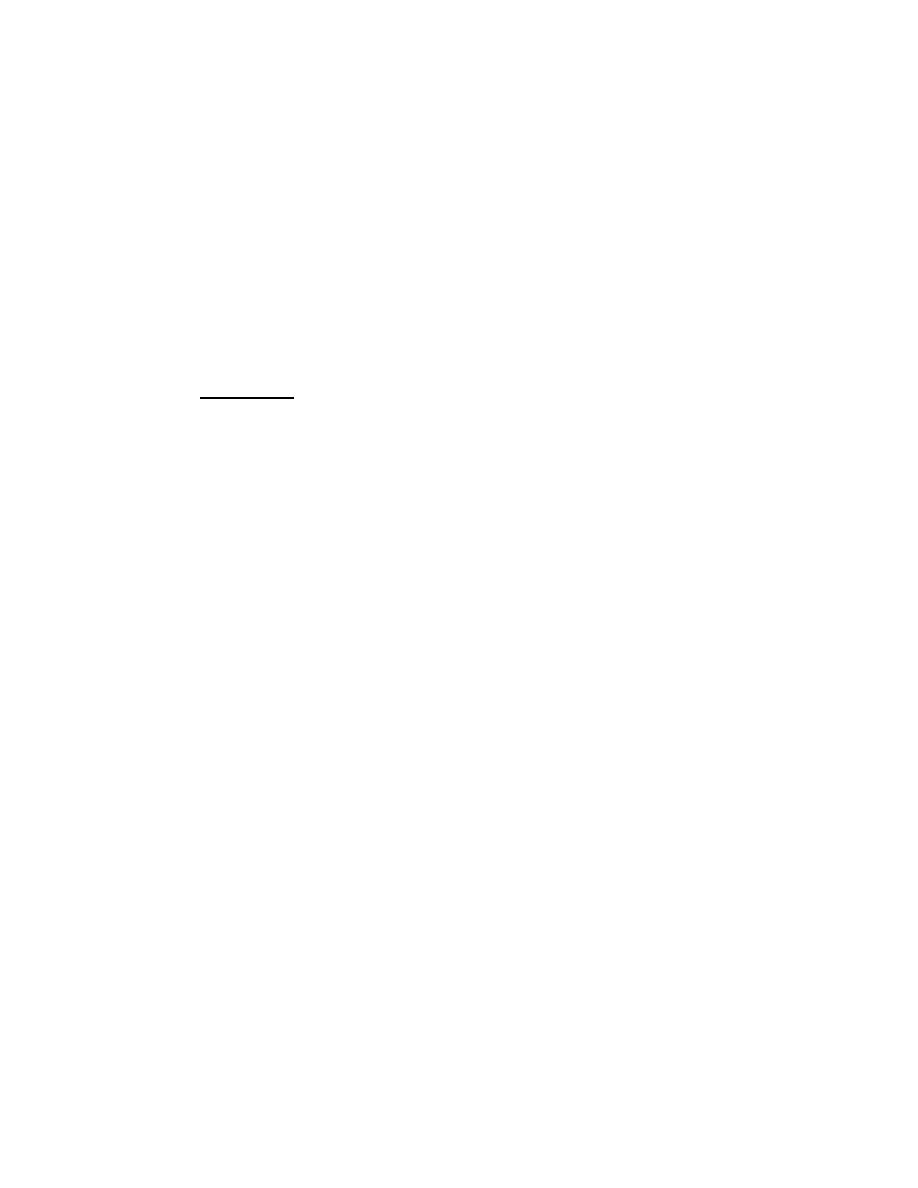
12
CHAPTER 1. SETTING THE STAGE
1.6
Compactness
Definition 1.40.
A subset in R
n
is called compact if it is closed and bounded.
Theorem 1.41
(The Bozano-Weierstrass Theorem). Let S ba a subset of
R
n
. Then the following are equivalent
(a) S is compact
(b) Every sequence in S has a subsequence converging to a point which
belongs to S.
The raltion between compact sets and continuous functions:
Theorem 1.42.
Let S
⊂ R
n
be compact and f : S
→ R
m
be continuous.
Then f (S) is compact (as a subset of R
m
).
Corollary 1.43.
Let S
⊂ R
n
be compact and f : S
→ R
m
be continuous.
Definition 1.44.
Let S
⊂ R
n
, f : S
→ R, and a ∈ S.
f (a) is the maximum (largest value) of f on S if f (a)
≥ f(x) for all
x
∈ S.
f (a) is the minimum (smallest value) of f on S if f (a)
≤ f(x) for all
x
∈ S.
Theorem 1.45
(The Extreme Value Theorem). Let S
⊂ R
n
be compact and
f : S
→ R
m
be continuous. Then there are a, b
∈ S such that f(a) is the
maximum value of f on S and f (b) is the minimum value of f on S.
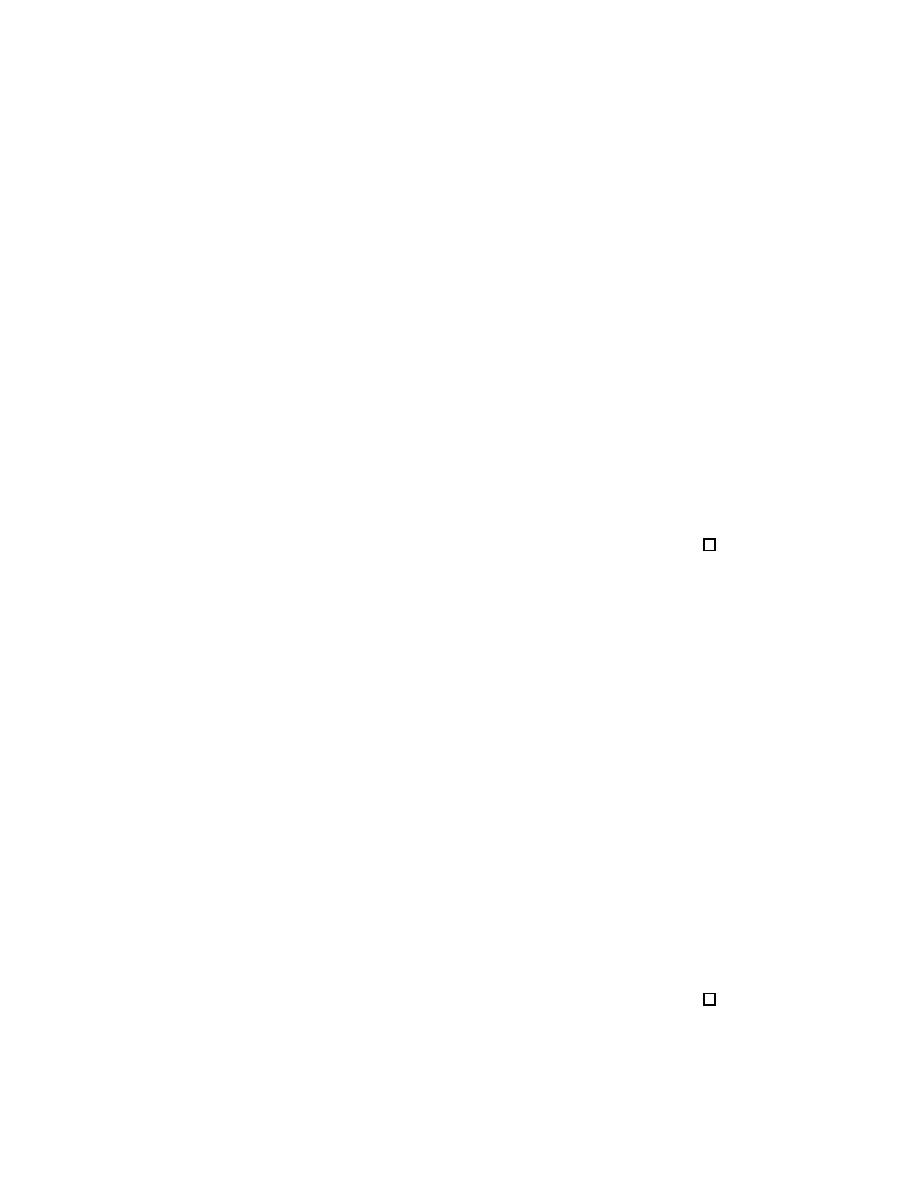
1.7. CONNECTEDNESS
13
1.7
Connectedness
Let S be a subset of R
n
.
• S is disconnected if there are non-empty sets S
1
and S
2
such that
S = S
1
∪ S
2
,
S
1
∩ ¯
S
2
=
∅, S
2
∩ ¯
S
1
=
∅.
(1.36)
We call the above pair (S
1
, S
2
) a disconnection of S. (Note: they are
not unique.)
• S is connected if it is NOT disconnected.
Theorem 1.46.
The connected subsets of R are the intervals, i.e.,
[a, b), [a, b], (a, b], (a, b), [c,
∞), (c, ∞), (−∞, c), (−∞, c].
Proof. Skipped (see text).
Notes: S is an interval in R if and only if
∀x, y ∈ S, ∀z ∈ R : x < z < y =⇒ z ∈ S.
(1.37)
Theorem 1.47.
If S
⊂ R
n
is connected and f : S
→ R
m
is continuous, then
f (S) is connected.
Proof. Proof by Contraposition: f (S) being disconnected implies S being
disconnected.
Suppose f (S) is disconnected then it has a disconnection (U
1
, U
2
). Let
S
1
= f
−
1
(U
1
) =
{x ∈ S : f(x) ∈ U
1
} and S
2
= f
−
1
(U
2
) =
{x ∈ S : f(x) ∈
U
1
}. Then S
1
, S
2
are not empty and S
1
∪ S
2
= S. Suppose S
1
∩ ¯
S
2
6= ∅, then
there is x
0
∈ S
1
∩ ¯
S
2
. There is a sequence
{x
k
} in S
2
such that x
k
∈ S
2
,
x
k
→ x
0
as k
→ ∞. Since f is continuous at x
0
∈ S: lim
k→∞
f (x
k
) = f (x
0
).
Note that f (x
k
)
∈ U
2
, then f (x
0
)
∈ ¯
U
2
. But we also have x
0
∈ S
1
which
implies f (x
0
)
∈ U
1
, therefore f (x
0
)
∈ U
1
∩ ¯
U
2
. This contradicts the fact
that U
1
∩ ¯
U
2
=
∅. Thus S
1
∩ ¯
S
2
=
∅. Similarly, S
2
∩ ¯
S
1
=
∅. Hence S is
disconnected.
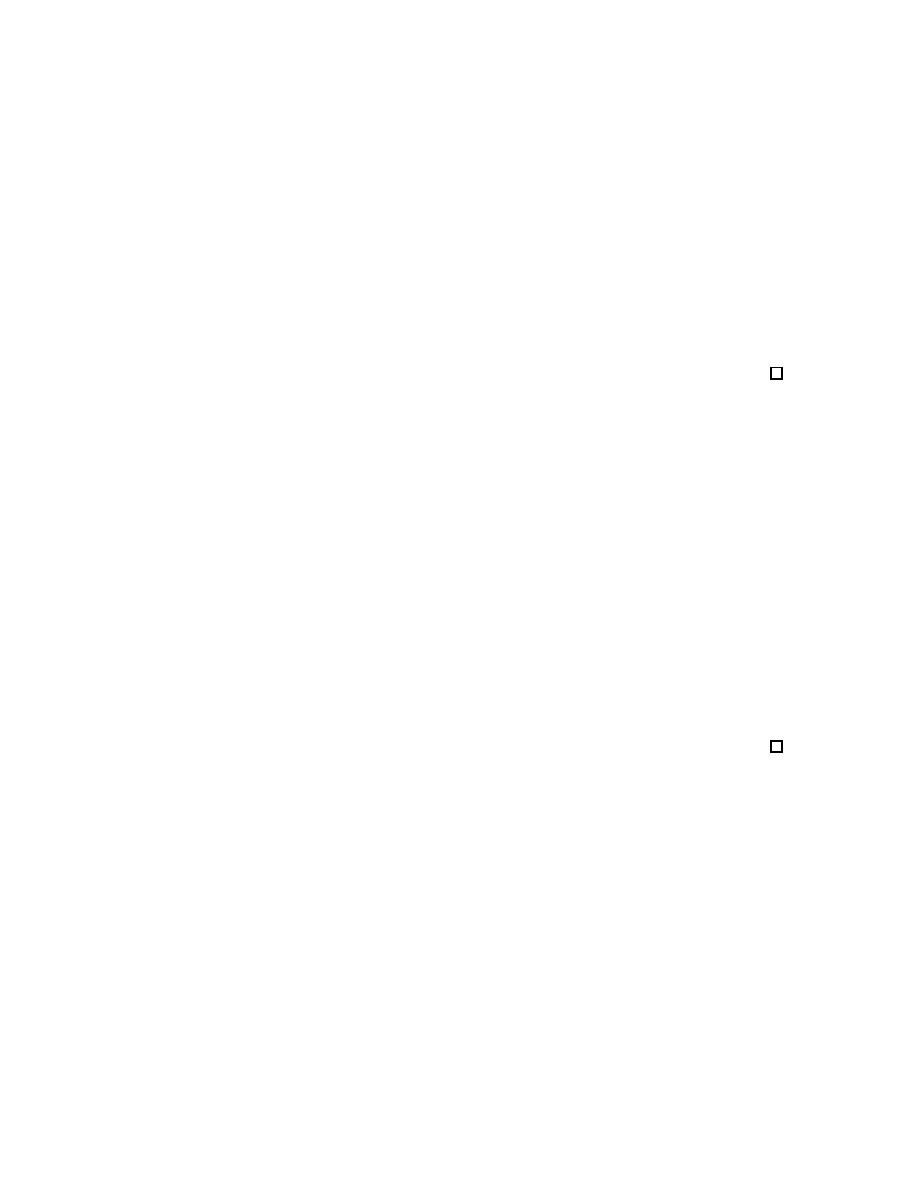
14
CHAPTER 1. SETTING THE STAGE
Corollary 1.48
(The intermediate value theorem). Suppose S is connected
and f : S
→ R is continuous. If a, b ∈ S, t ∈ R and f(a) < t < f(b), then
there is c
∈ S such that f(c) = t.
Proof. We have f (S) is a connected subset of R, hence it is an interval. Since
f (a), f (b)
∈ f(S), then we have the whole interval [f(a), f(b)] is contained
in f (S). Therefore t
∈ f(S), which means that there is c ∈ S such that
t = f (c).
Definition 1.49.
A set S
⊂ R
n
is said to be arcwise connected (or pathwise
connected ) if any two points in S can be joined by a continuous curve in S,
that is for any a, y
∈ S, there is a continuous function g : [0, 1] → S such
that g(0) = a and g(1) = b.
Theorem 1.50.
If S is arcwise connected, then S is connected.
Proof. Let S be arcwise connected. Suppose S is disconnected. Let (S
1
, S
2
)
be a disconnection of S. There are a
∈ S
1
and b
∈ S
2
. Since S is arcwise
connected there is a continuous function f : [0, 1]
→ S such that f(0) = a
and f (1) = b. Note that T = f ([0, 1]) is connected. Let T
1
= S
1
∩ T and
T
2
= S
2
∩ T . Then T
1
, T
2
are non-empty sets (containing a, b respectively.).
We have T
1
∩ ¯
T
2
⊂ S
1
∩ ¯
S
2
=
∅, hence T
1
∩ ¯
T
2
=
∅. Similarly, T
2
∩ ¯
T
1
=
∅.
Therefore, T is disconnected, contradiction. Conclusion: S is connected.
Let a, b, c
∈ S. If there is a countinuous curve in S connecting a and b,
and one connectiong b and c, then there is one connecting a and c (transitive
relation). Indeed, let f, g : [0, 1]
→ S such that f(0) = a, f(1) = b and
g(0) = b, g(1) = c. Then let h : [0, 1]
→ S,
h(t) =
f (2t)
if 0
≤ t < 1/2,
g(21
− 1)
if 1/2
≤ t ≤ 1.
(Verify the continuity of h at 1/2 using left and right limits.)

1.7. CONNECTEDNESS
15
Example 1.51.
Balls, spheres in R
3
and disks, circles in R
2
are arcwise-
connected, hence connected.
Example 1 p.34 in the text. In R
2
, let a = (
−1, 0), b = (1, 0) and
S
1
= B(1, a), S
2
= B(1, b). Let S = S
1
∪ S
2
and T = S
1
∩ ¯
S
2
. Then
S is disconnected. Since every point in T can be connected to the origin
(0, 0)
∈ T , we have T is arcwise connected, hence connected.
Note: A connected set is not necessarily arcwise connected. See text p.37
for an example of a set in R
2
which is connected but NOT arcwise-connected.
Theorem 1.52.
If S is connected and open, then S is arcwise connected.
Proof. Let S be open and connected. Let a be a fixed point in S. We will
prove that we can connect a to any other points of S, hence showing that S
is arcwise connected.
Set S
1
=
{x ∈ S : x is joined by a continuous curve in S}.
Claim: S
1
= S. Then S is arcwise connected.
Proof of the claim: Suppose S
1
6= S. Then S
2
= S
\ S
1
is not empty and
S = S
1
∪ S
2
. Note: S
1
6= ∅ and S
1
∩ S
2
=
∅. We now show that S
1
∩ ¯
S
2
and
S
2
∩ ¯
S
1
are empty.
Let x
∈ S
1
, S being open implies there is a ball B(r, x)
⊂ S, r > 0. For
every y
∈ B, there is a curve from a to x then x to y, hence y ∈ S
1
. Therefore
B(1, x) is a subset of S
1
. Thus x
6∈ ¯
S
2
. We then have S
1
∩ ¯
S
2
=
∅.
Let x
∈ S
2
, there is a ball B = B(r, x)
⊂ S. Suppose x ∈ ¯
S
1
then there is
y
∈ B ∩ S
1
, hence we can find a continuous curve in S from a to y then y to
x. Thus x
∈ S
1
, which is absurd since x
6∈ S
1
(S
1
∩ S
2
=
∅). Hence x 6∈ ¯
S
1
,
therefore S
2
∩ ¯
S
1
=
∅.
We have proved (S
1
, S
2
) is a disconnection of S, which is impossible since
S is connected. Therefore the claim is true and the proof of the theorem is
complete.

16
CHAPTER 1. SETTING THE STAGE
1.8
Uniform continuity
Let S
⊂ R
n
and f : S
→ R
m
be continuous. We have
∀x ∈ S, ∀ε > 0, ∃δ > 0, ∀y ∈ S : |y − x| < δ =⇒ |f(x) − f(y)| < ε. (1.38)
The above δ in general depends on x, ε. In some cases, δ is independent
of x, then roughly speaking, the rate f (y) approaches f (x) as y approaches
x is controlled uniformly on the whole domain S.
Definition 1.53.
A function f : S
→ R
m
is uniformly continuous on S if
∀ε > 0, ∃δ > 0, ∀x ∈ S, ∀y ∈ S : |y − x| < δ =⇒ |f(x) − f(y)| < ε. (1.39)
Example 1.54.
The function f (x) = x
2
is not uniformly continuous on
(0,
∞). Suppose it is, let ε > 0, then there is δ > 0 such that for any
x, y
∈ (0, ∞) and δ > 0, we have
|y
2
− x
2
| = |y − x||y + x| < ε.
Take y = x + δ then 2δx < ε. So δ < ε/(2x) which goes to zero as x goes to
infinity which is a contradiction since δ is a fixed positive number.
Example 1.55.
The function f (x) = sin x is uniformly continuous on R.
Indeed, by the Mean Value Theorem (next chapter),
|f(x) − f(y)| = |x −
y
|| cos z| ≤ |x − y|, where z ∈ [x, y] or [y, x]. We can take δ = ε in (1.39).
Example 1.56.
The function f (x) = x
2
is uniformly continuous on every
bounded subsets of R. Suppose there is M > 0 such that
|x| ≤ M for all
x
∈ S. Then for any x, y ∈ S.
|f(x) − f(y)| = |x − y||x + y| ≤ 2M|x − y|.
We can take δ = ε/(2M) in (1.39). Note: We can use the Mean Value
Theorem as well.
Theorem 1.57.
Suppose S is compact and f : S
→ R
m
is continuous. Then
f is uniformly continuous.
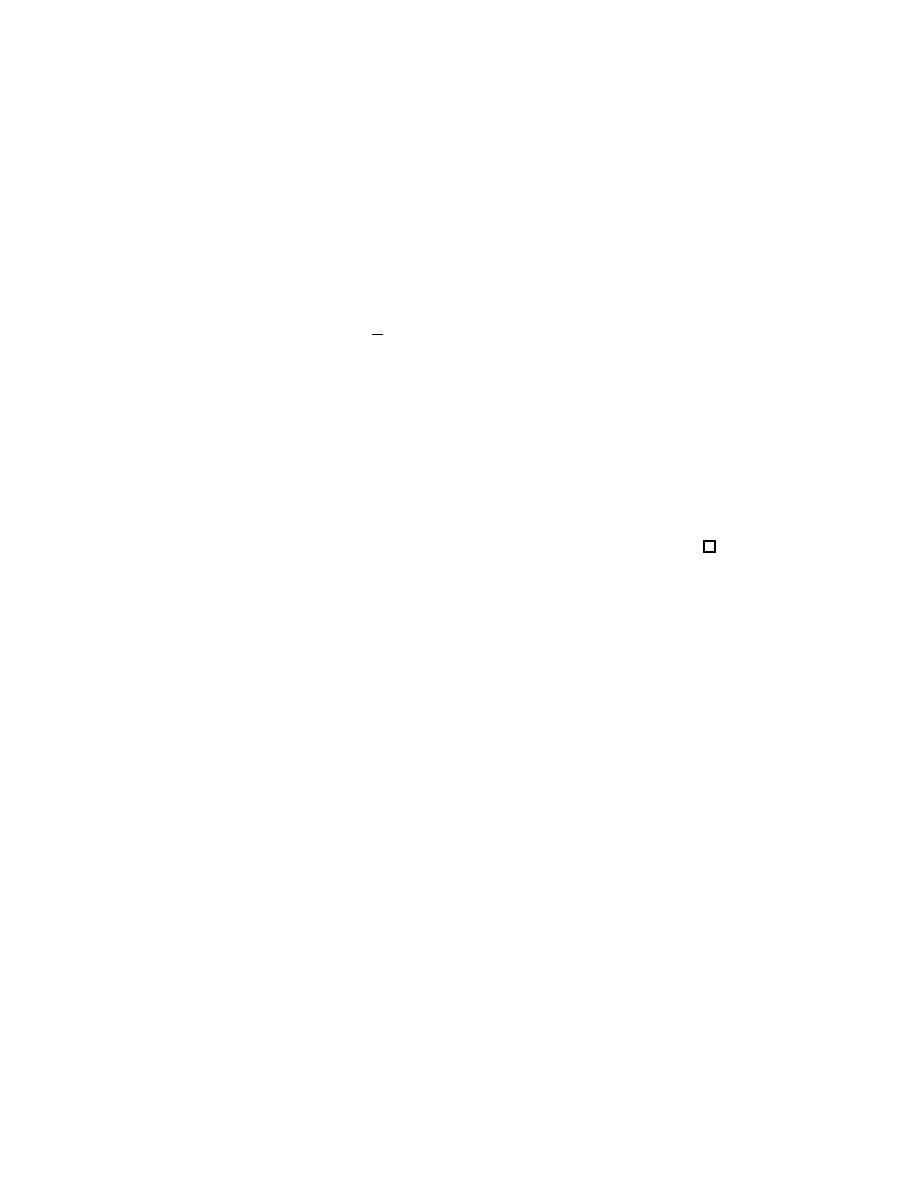
1.8. UNIFORM CONTINUITY
17
Proof. By contradiction. Suppose f is not uniformly continuous, then
∃ε
0
> 0,
∀δ > 0, ∃x, y ∈ S : |x − y| < δ and |f(x) − f(y)| ≥ ε
0
.
(1.40)
Take δ = 1/k
→ 0. There are sequences {x
k
}, {y
k
} in S such that
|x
k
− y
k
| <
1
k
,
|f(x
k
)
− f(y
k
)
| ≥ ε
0
.
(1.41)
Since S is compact, there exist covergent subsequences
{x
k
j
}, {y
k
j
} whose
limits belong to S. By the first property of (1.41), we have
lim
j→∞
x
k
j
= lim
j→∞
y
k
j
= x
0
∈ S.
Since f is continuous at x
0
, lim
j→∞
|f(x
k
j
)
− f(y
k
j
)
| = |f(x
0
)
− f(x
0
)
| = 0
which contradicts the second property in (1.41). We conclude that f must
be uniformly continuous.
